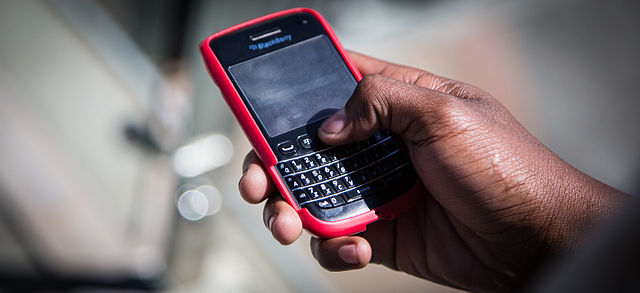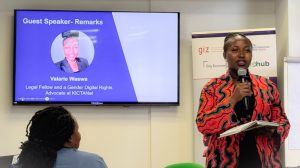Mobile phones enable us to connect with our personal acquaintances, do business, and provide a portable platform to work on while on the move. For the two phones to talk to each other, they need a special kind of spectrum we call IMT.
IMT stands for International Mobile Telephony. IMT is used to indicate spectrum that is reserved for all mobile network operators including small-scale operators and community networks, and is the generic term used by ITU to designate voice and broadband mobile systems. IMT systems provide access to a wide range of telecommunication services including fast data access, unified messaging and broadband multimedia, supported by mobile and fixed networks. (https://www.itu.int/ITU-D/tech/MobileCommunications/Spectrum-IMT.pdf)
Spectrum Allocation in Kenya
In Kenya, the Communications Authority of Kenya (CA) issues frequency assignments to Network Facilities Providers (NFP) to enable operators to deploy network infrastructure and provide connectivity to consumers over 2G,3G,4G, and recently 5G networks. The Authority plans frequencies for use by various services every four years following results from the World Radio Conference (WRC). The current spectrum assignments to tier 1 providers in Kenya, a category of licensees (refer to our second blog on tier 1 providers) are:
| 800MHz | 900MHz | 1800MHz | 2100MHz | 3500MHz | |
|---|---|---|---|---|---|
| Airtel | 2*10 | 2*10 | 2*10 | 2*10 | – |
| Safaricom | 2*10 | 2*17.5 | 2*20 | 2*10 | – |
| Telkom Kenya | 2*10 | 2*17.5 | 2*10 | 2*10 | 2*11 |
The format 2×10, 2×120, etc means that the spectrum has been assigned on a paired basis with an uplink band and a downlink band also known as Frequency Division Duplex (FDD).
(https://spectrummonitoring.com/frequencies.php?market=KEN)
In May 2022, Safaricom was granted 60MHz of spectrum in the 2600MHz band in preparation for its commercial 5G launch. In October 2022, the telecom operator became the first firm to deploy the technology commercially in East Africa. The technology was Activated in Nairobi, Kisumu, Kisii, and Kakamega, to be expanded to 150 sites across nine towns.
In July 2022, Airtel Kenya bought 60MHz of additional spectrum in the 2,600MHz band to support the deployment of 5G technology. In February 2023, the telecom operator announced plans to introduce its fifth generation (5G) mobile broadband service in high-income neighborhoods, which it says have the gadgets and purchasing power to benefit from faster internet speeds.
For more about 5G in Kenya, check out our 5G policy brief.
Decentralized Cellular Networks
Decentralized cellular networks have made it possible to have more granular assignments of IMT spectrum enabling new kinds of operators from private LTE networks to community-owned network infrastructure. These networks make use of small cell radio base stations, radio spectrum, and a wireless architecture to connect these base stations to provide mobile broadband connectivity. This form of low-cost, bottom-up technology enables communities to build their own mobile networks that, unlike centralized cellular systems, could in future prove to be affordable, reliable, and scalable as per the user’s needs.
A good example of an organization supporting the building of decentralized cellular networks in Africa is Ukama, a California-based startup already working in DRC as part of an initiative to expand rural connectivity for half a million people in the DRC’s eastern region. This initiative is a partnership between the U.S. Trade and Development Agency (USTDA), Global Broadband Solution SARL (GBS), an internet service provider based in the Democratic Republic of the Congo (DRC), and Ukama.
Last-mile connectivity solutions and affordable access to communication infrastructure require multi-stakeholder efforts, but at the core of successful implementation of these efforts is supportive policy and regulatory frameworks especially in the freeing up of spectrum for unlicensed and lightly licensed use.
Freeing up spectrum in the S-band (2- 4GHz) , C-band (4 – 8 GHz) and below 2Ghz for lightly licensed use, would enable community networks set-up decentralized cellular networks towards expanding cellular broadband connectivity. Radio spectrum below 2 GHz has the ability to serve larger rural rural areas where community networks operate because of their better propagation.
This has been done in the USA where the Federal Communications Commission (FCC) approved use of 150 MHz of spectrum (from 3.55 to 3.7 GHz) which can be used for private mobile networks, known as citizens Broadband Radio Service (CBRS), unique to the United States spectrum ecosystem. CBRS has the dynamic sharing aspect; When a user/device wants to use the CBRS band, it needs to be requested via a cloud-based system. If the spectrum is free in the desired geographic location, a request is granted. When the user/device is done with the channel, it is returned to the pool. More on CBRS can be found here.
IMT Spectrum Perspectives for Underserved areas in Kenya
In May 2021, CA published a report on Licensing and Shared Spectrum Framework for Community Networks. A section of the report explored ways to unlock IMT spectrum for small-scale operators and community networks to enable them operate local mobile broadband infrastructure. Amongst the regulatory frameworks explored include:
- Spectrum Set-Aside for Underserved Regions – this is where a portion of frequency band is set-aside by the national regulator to be used in underserved areas. In Mexico, the regulator has granted use of 2×5 MHz of spectrum in the GSM 850 MHz band strictly for areas that have no connectivity.
- Use-it or share-it spectrum mechanisms – this approach unlocks spectrum for use by giving access to licensed or state spectrum that is unused or underutilized where licensees are offered protection from interference and not exclusivity of spectrum use. In 2019, OFCOM, the UK regulator introduced a new license product, the Local Access License, enabling access to already licensed spectrum to the Mobile Network Operators (MNOs) in areas it is not being used.
- Dynamic assignment of IMT spectrum – An example of dynamic assignment of spectrum is what is being done in deployment of TV white space where unused radio frequencies allocated for broadcasting services are assigned to users using a geolocation database.
- Localized spectrum license – This is a mechanism exploring granular access to LTE bands enabling deployment of private LTE networks or community networks to deploy their own mobile networks. Refer to the section on decentralized cellular networks above. To add onto the CBRS case in the USA, in the UK, OFCOM introduced a Shared Access License, opening access to four spectrum bands for mobile technology, taking advantage of frequencies not currently assigned to mobile network operators, and taking advantage of frequencies not currently assigned to mobile network operators.
It is however notable that no advancements to the above have taken place after the publication of the report. Going beyond traditional methods and terms of assigning mobile spectrum is key if we are to connect the next billion. We need to move away from the narrative of spectrum being a scarce resource and instead engage in regulatory frameworks for efficient utilization of the available spectrum.
This is a series of blogs about Spectrum in a series of our publications on Community Networks.
__________________________________________________________
Ms Catherine Kyalo is the KICTANet Africa Regional Coordinator for Community Networks under the APC-LOCNET initiative. She is passionate about community welfare and enjoys yoga to rejuvenate. LinkedIn | Twitter
![]()




